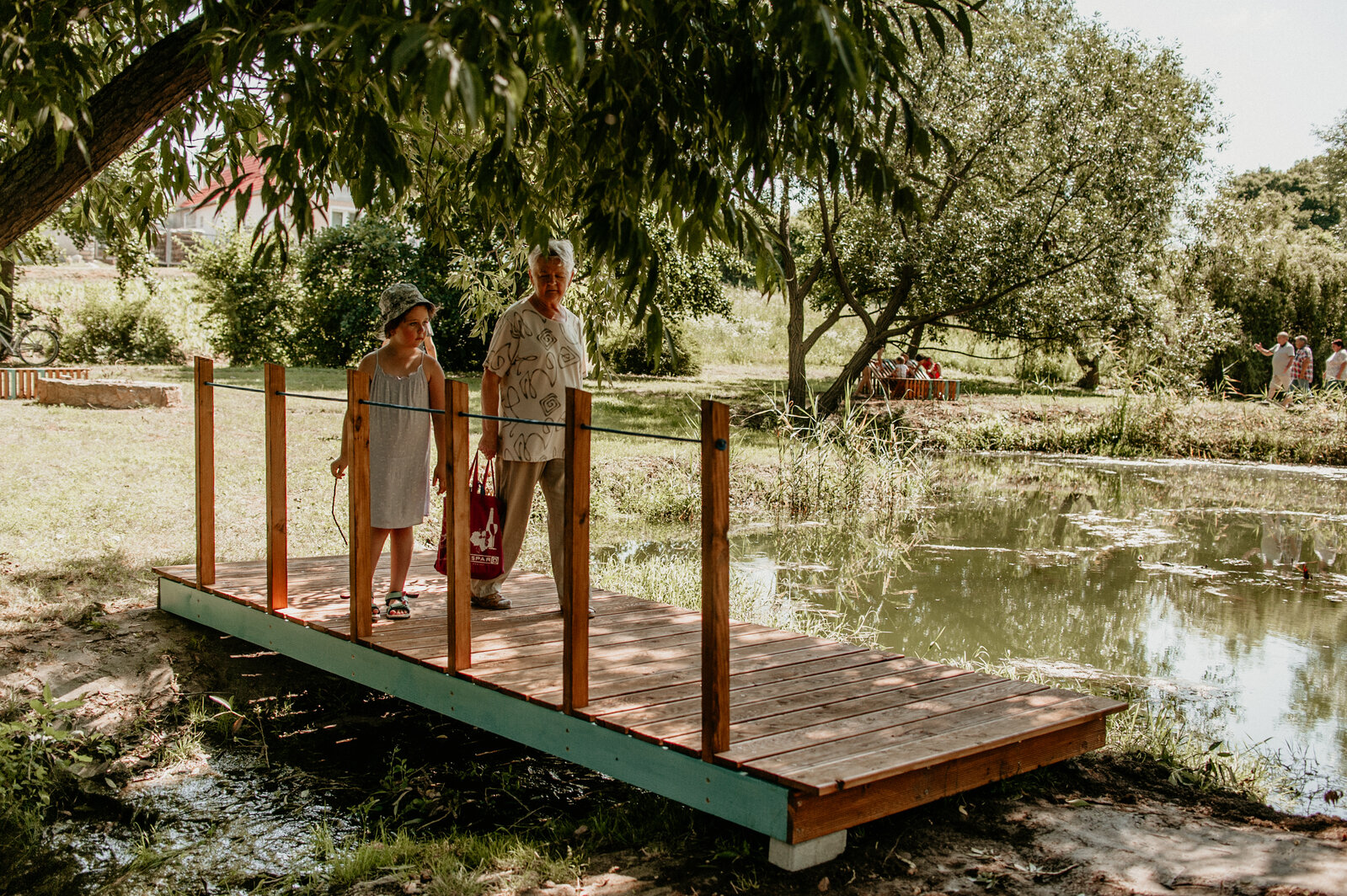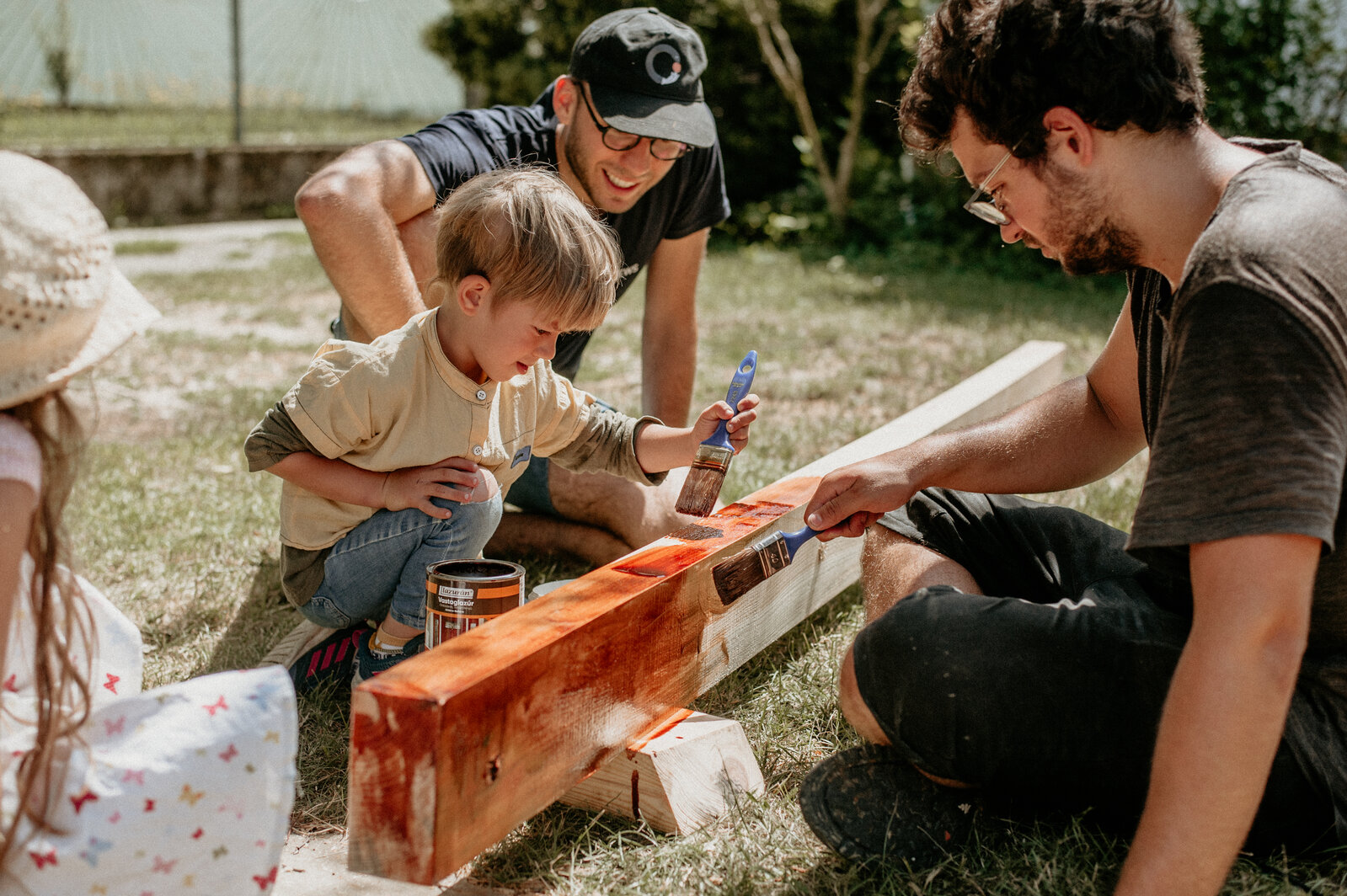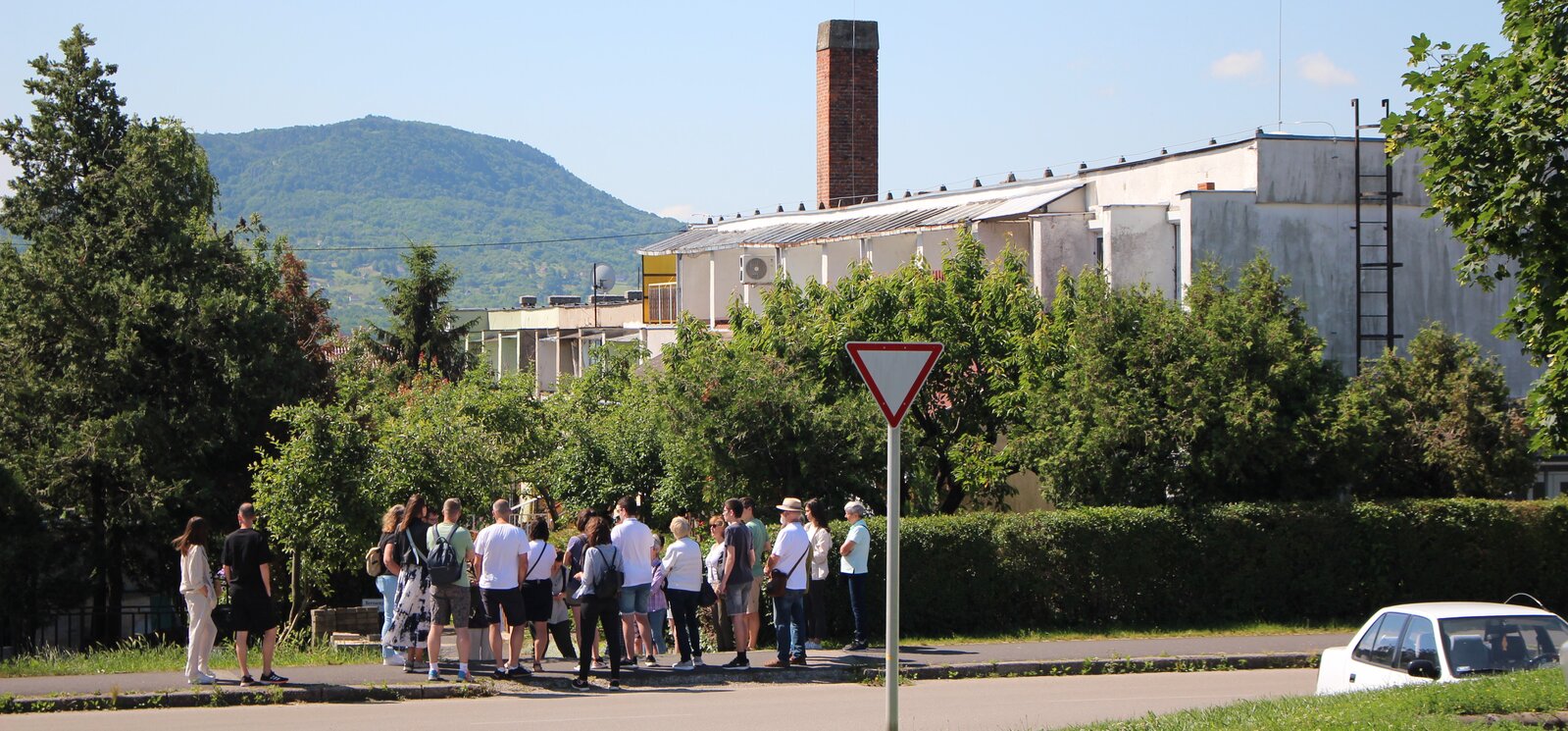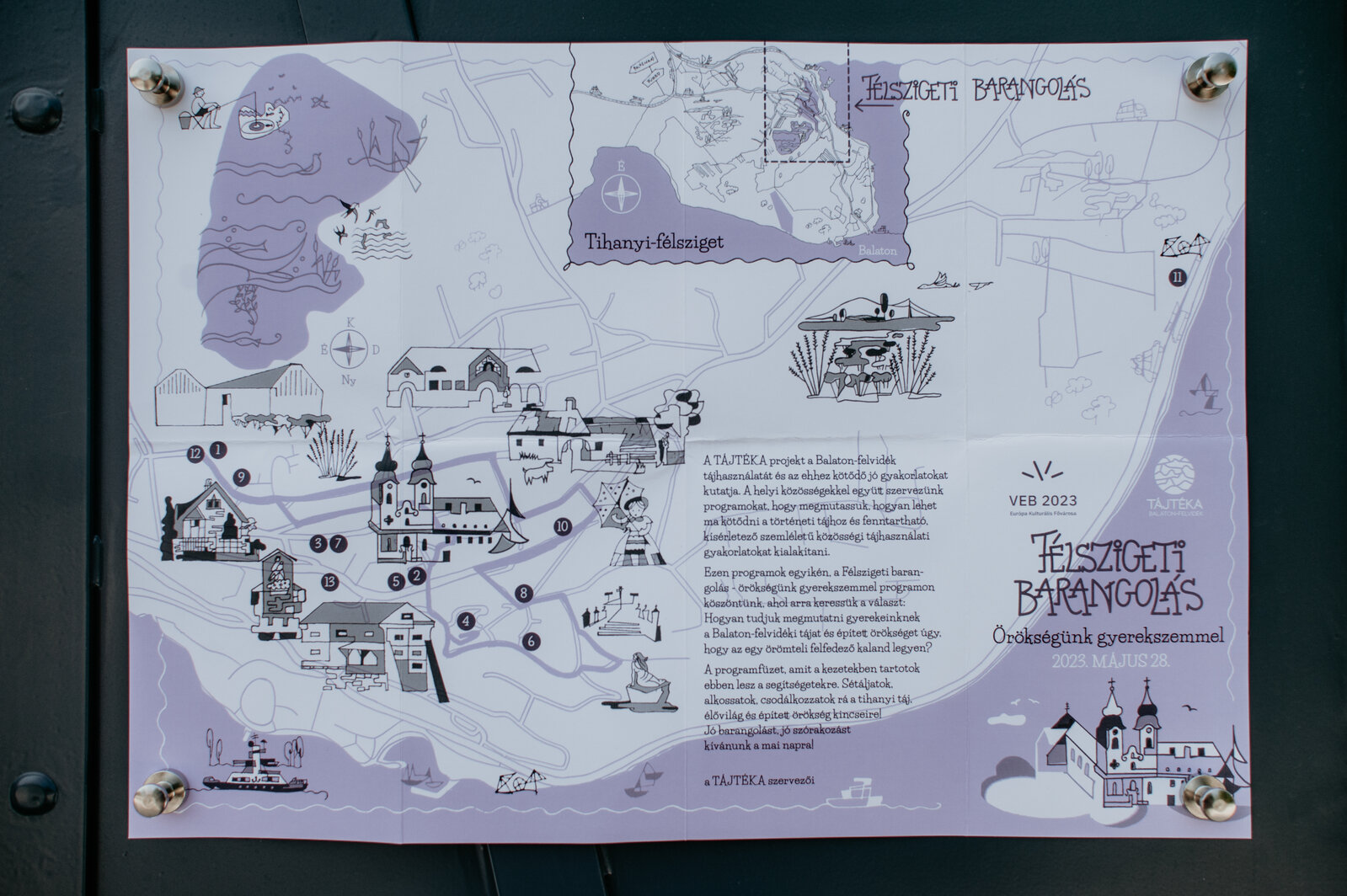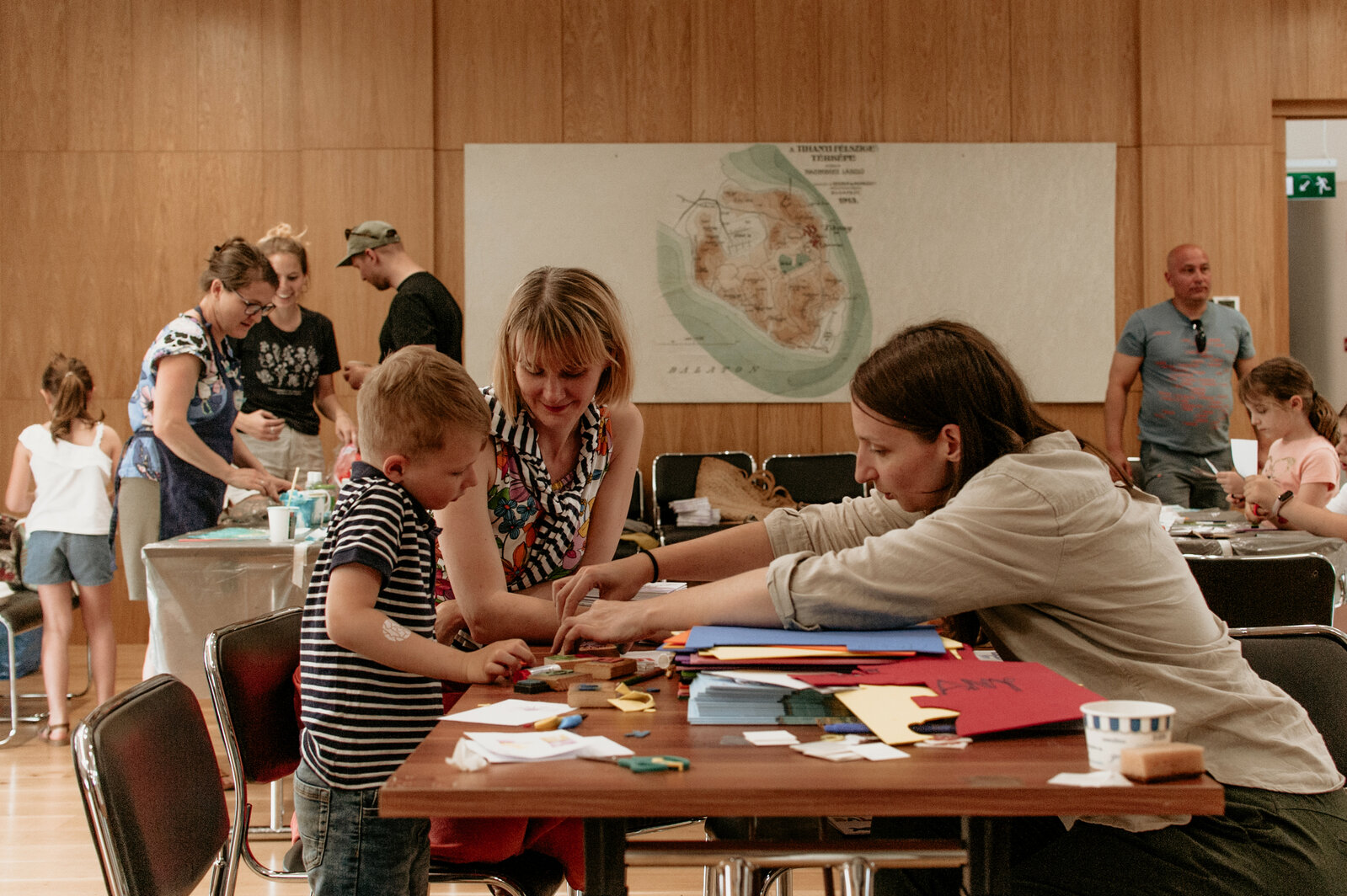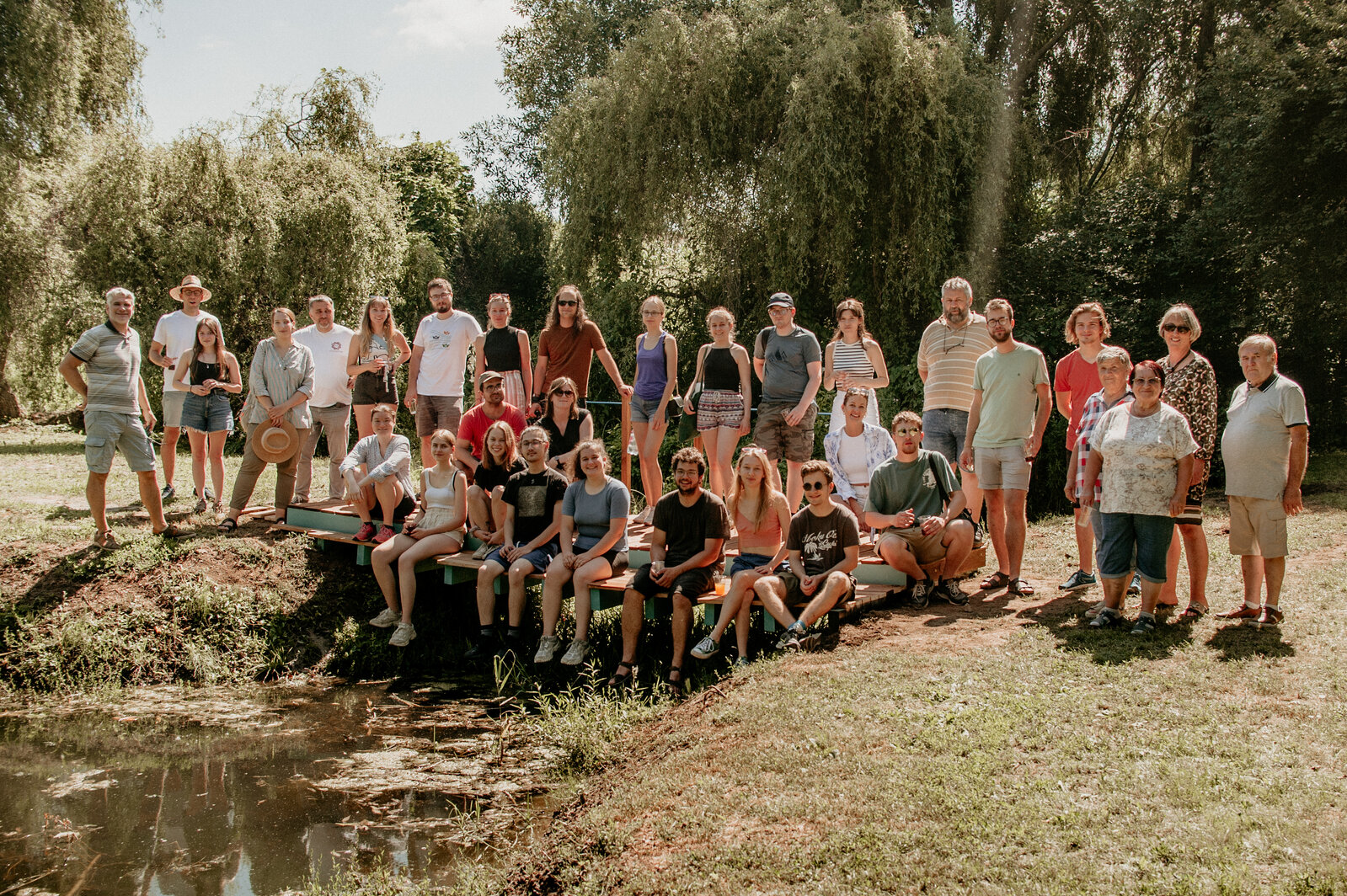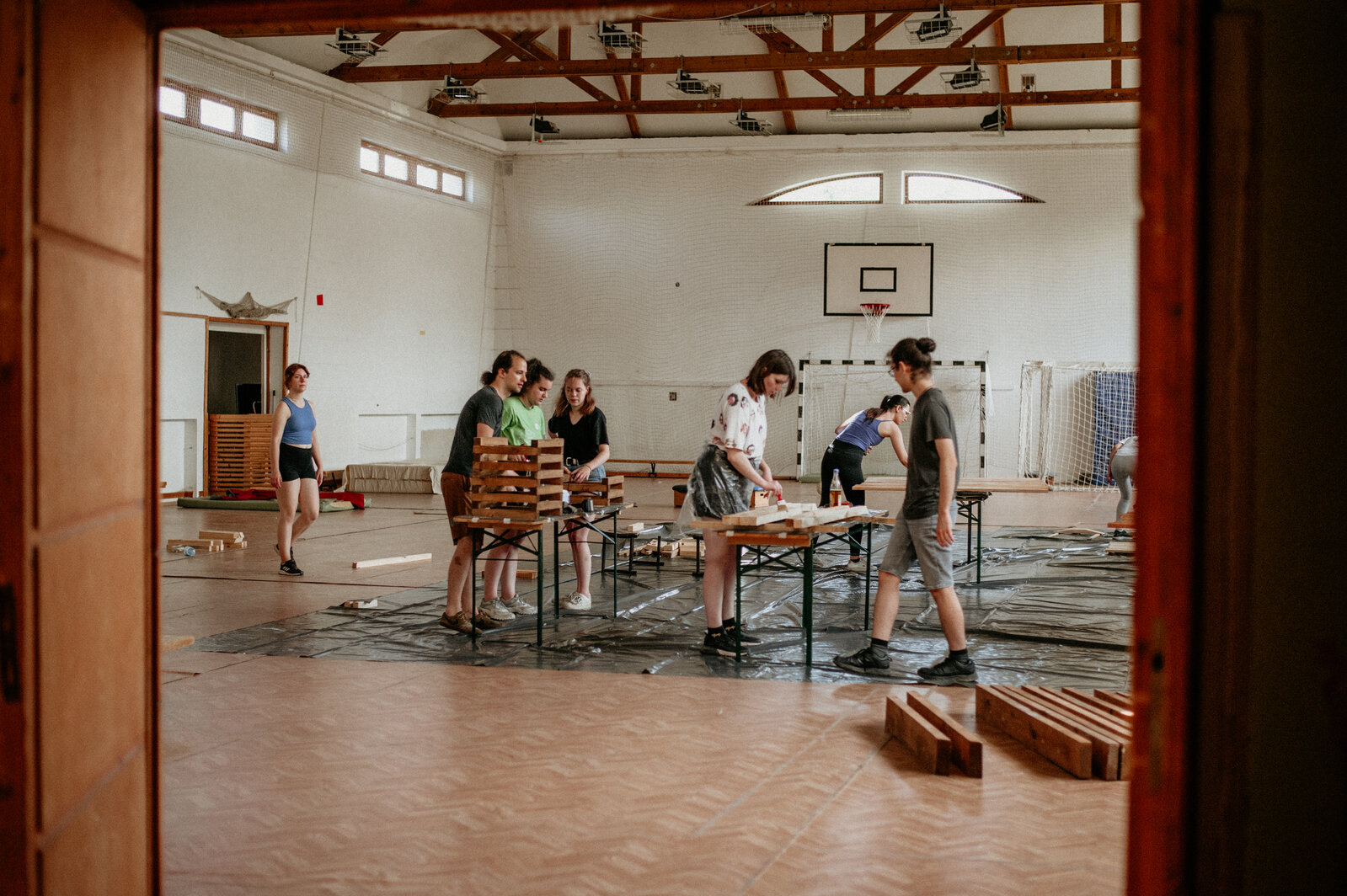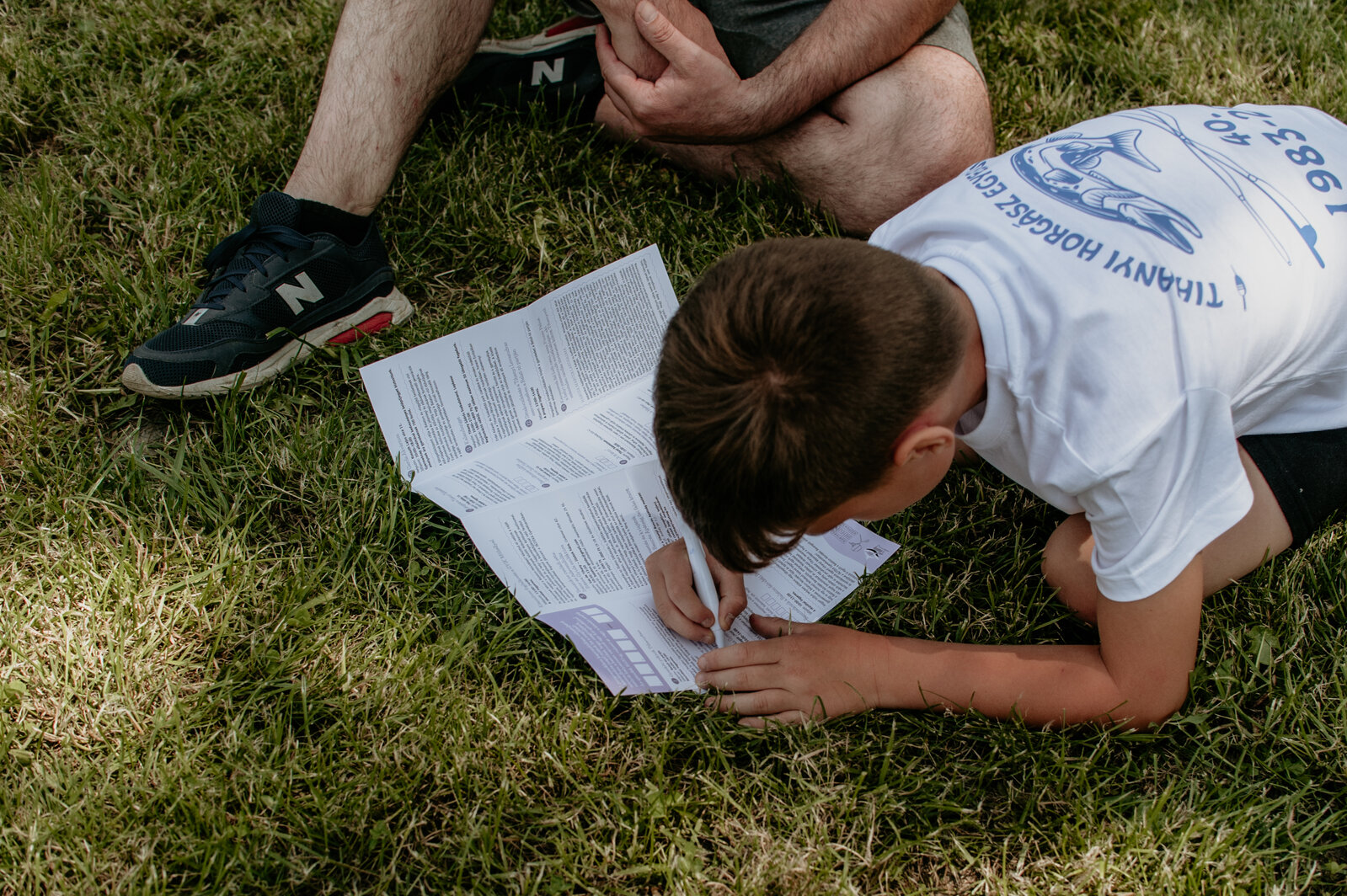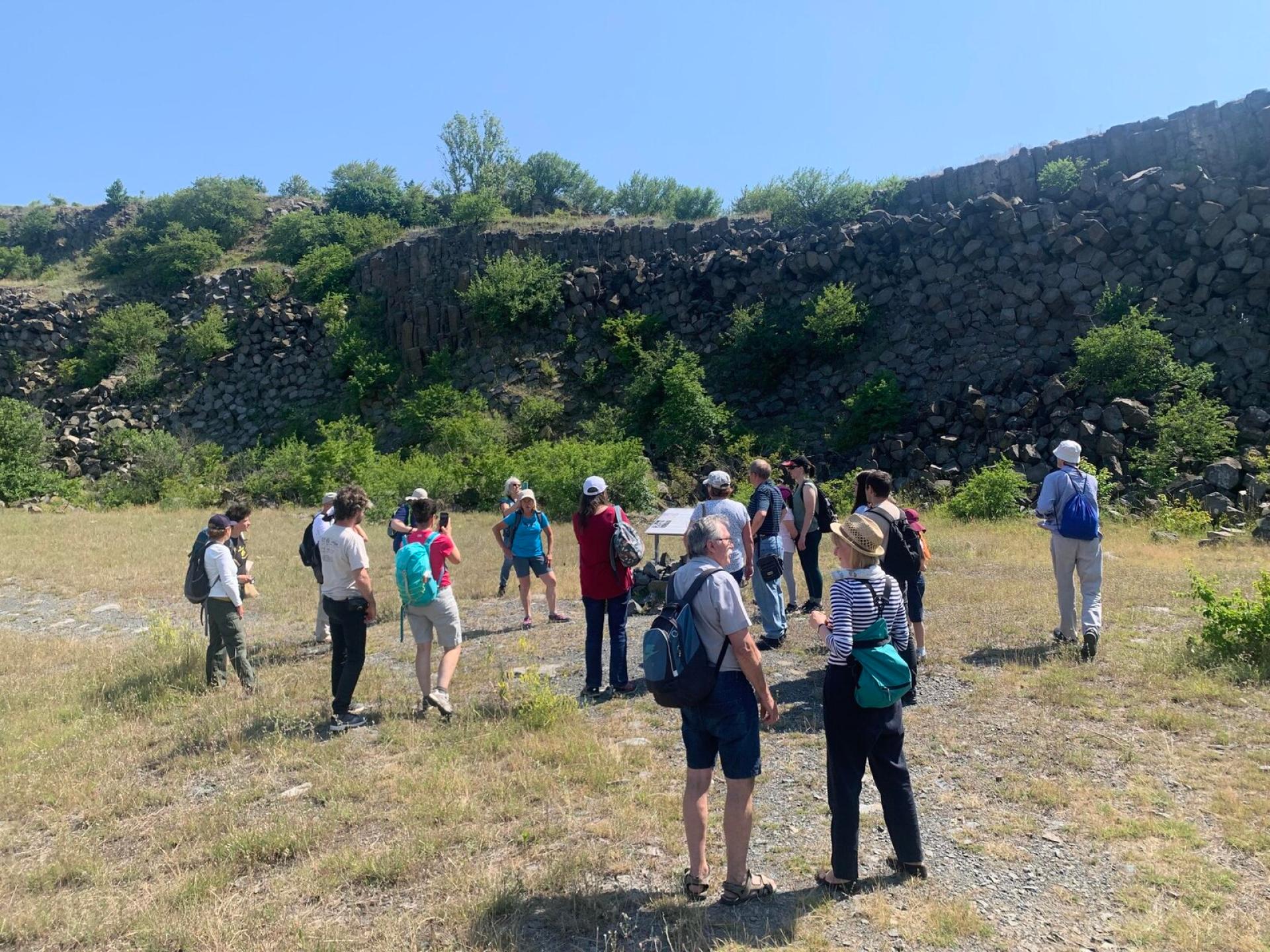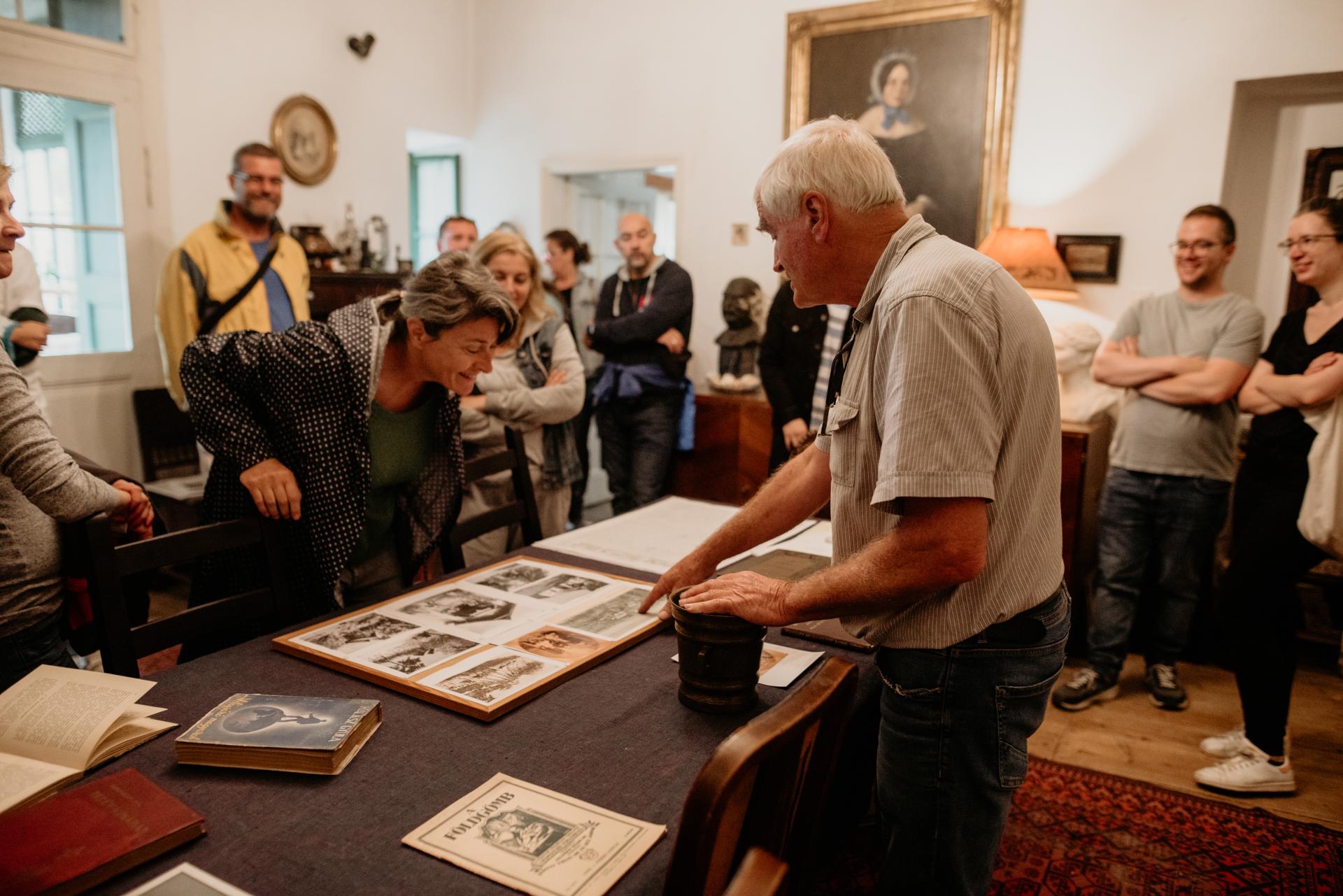TÁJTÉKA events in the Balaton Uplands
Basic information
Project Title
TÁJTÉKA events in the Balaton Uplands
Full project title
Cultural landscape and heritage as a base for community building and local identity
Category
Regaining a sense of belonging
Project Description
Aiming to start a dialogue about the region’s intelligent and sustainable landscape use, the TÁJTÉKA project took place on the Balaton Uplands between 2021-2023, in the framework of the VEB 2023 ECoC program, managed by the Hungarian Contemporary Architecture Centre (KÉK). Besides publications and an online database of local good practices, we also organized various events with local communities to engage them in developing ways to shape the region’s future with a shared sense of purpose.
Geographical Scope
Regional
Project Region
Balaton Uplands, Hungary
Urban or rural issues
Mainly rural
Physical or other transformations
It refers to other types of transformations (soft investment)
EU Programme or fund
Yes
Which funds
Other
Other Funds
European Capital of Culture
Description of the project
Summary
Managed by the Contemporary Architecture Centre (KÉK), the TÁJTÉKA project took place in the Balaton Uplands region in Hungary between 2021-2023, in the framework of the Veszprém-Balaton 2023 European Capital of Culture program.
The opportunities offered by the uniqueness and attractiveness of this cultural landscape are coupled with challenges such as mass tourism, soaring real estate prices, climate change, and the disappearance of living communities.We aimed to start a dialogue about the region’s intelligent landscape and community practices by establishing networks between local stakeholders and aiding them in showcasing ways of attachment to a historical landscape, while, at the same time, establishing sustainable and renewable lifestyles and communal land use practices.
One element of the project was a three-volume toolkit that, besides practical recommendations for permanent and temporary residents as well as local decision makers, established visions for the future through the themes of sustainable farming, living traditions, experimental attitudes, and intergenerational knowledge transfer, while emphasizing the role of communities in intelligent landscape use. Since one of the key issues of the region is the relationship of the built environment with the cultural landscape, we have also hosted a series of public discussions regarding this topic.
Perhaps the most wide-reaching were the four public events that we organized in cooperation with local communities throughout the year, whose methodology were all based on programs successfully implemented by KÉK in previous years. A heritage day focusing on children’s perspectives, a festival of walking tours (‘SéTapolca’), a building camp, and a weekend of open houses (‘Pomerium’) connected different generations and social groups in sharing their stories and their knowledge, establishing new connections, rethinking their relation to natural and built heritage, as well as renewing underused public spaces.
The opportunities offered by the uniqueness and attractiveness of this cultural landscape are coupled with challenges such as mass tourism, soaring real estate prices, climate change, and the disappearance of living communities.We aimed to start a dialogue about the region’s intelligent landscape and community practices by establishing networks between local stakeholders and aiding them in showcasing ways of attachment to a historical landscape, while, at the same time, establishing sustainable and renewable lifestyles and communal land use practices.
One element of the project was a three-volume toolkit that, besides practical recommendations for permanent and temporary residents as well as local decision makers, established visions for the future through the themes of sustainable farming, living traditions, experimental attitudes, and intergenerational knowledge transfer, while emphasizing the role of communities in intelligent landscape use. Since one of the key issues of the region is the relationship of the built environment with the cultural landscape, we have also hosted a series of public discussions regarding this topic.
Perhaps the most wide-reaching were the four public events that we organized in cooperation with local communities throughout the year, whose methodology were all based on programs successfully implemented by KÉK in previous years. A heritage day focusing on children’s perspectives, a festival of walking tours (‘SéTapolca’), a building camp, and a weekend of open houses (‘Pomerium’) connected different generations and social groups in sharing their stories and their knowledge, establishing new connections, rethinking their relation to natural and built heritage, as well as renewing underused public spaces.
Key objectives for sustainability
We have considered sustainability a key aspect of the whole project and not only in the environmental, but also in the social and economical sense. Therefore, we always tried to engage as many local stakeholders (including representatives of municipalities) as possible so they would be more invested in the project and more inclined to continue organizing and supporting it in the upcoming years.
We consider the environmental education of children a key element in sustainability. Inspired by this idea, the aim of the children’s day program on the Tihany Peninsula was to involve the youngest residents of the otherwise quite touristy village of Tihany in the discovery of local heritages, thus providing ways for preserving tangible and intangible heritage for future generations.
KÉK has been organizing building camps for architecture students with the Budapest University of Technology and Economics (BME) for several years. The public furniture pieces that the students design and build, use materials that are either biodegradable (wood) or have a great longevity (steel). The small-scale interventions can contribute to more conscious long-time planning including more inclusive and aesthetic public spaces that serve the needs of the community.
Urban walks have rapidly gained popularity in the past decade in Hungary – KÉK’s specialty are architecture-themed walks held primarily by professionals in Budapest. In the Tapolca Basin, we focused both on built and (in some cases, endangered) natural heritage by walking and hiking tours led by local guides.
In the town of Balatonalmádi, thirty residential and public buildings opened their doors offering a wide range of community programs by local volunteers. Both the walking tours and this community festival promote ways of sustainable and slow tourism (walking, cycling, hiking) as well as local tourism.
Through these initiatives we are hopefully encouraging more young people to stay in their hometown or home village by
We consider the environmental education of children a key element in sustainability. Inspired by this idea, the aim of the children’s day program on the Tihany Peninsula was to involve the youngest residents of the otherwise quite touristy village of Tihany in the discovery of local heritages, thus providing ways for preserving tangible and intangible heritage for future generations.
KÉK has been organizing building camps for architecture students with the Budapest University of Technology and Economics (BME) for several years. The public furniture pieces that the students design and build, use materials that are either biodegradable (wood) or have a great longevity (steel). The small-scale interventions can contribute to more conscious long-time planning including more inclusive and aesthetic public spaces that serve the needs of the community.
Urban walks have rapidly gained popularity in the past decade in Hungary – KÉK’s specialty are architecture-themed walks held primarily by professionals in Budapest. In the Tapolca Basin, we focused both on built and (in some cases, endangered) natural heritage by walking and hiking tours led by local guides.
In the town of Balatonalmádi, thirty residential and public buildings opened their doors offering a wide range of community programs by local volunteers. Both the walking tours and this community festival promote ways of sustainable and slow tourism (walking, cycling, hiking) as well as local tourism.
Through these initiatives we are hopefully encouraging more young people to stay in their hometown or home village by
Key objectives for aesthetics and quality
Since one of the most attractive aspects of the region is the amazingly varied cultural landscape, the whole aim of the TÁJTÉKA project was to raise awareness of the importance of preserving natural, built and intangible values of the region, while also renewing traditions and establishing future visions that contribute to that process.
The aim of the building camp that took place in four villages in the Vázsony Basin was to develop more aesthetic, playful and safe public spaces open to everyone. The pieces included a bench for a public campfire and a tanning bed next to a lake, a bridge to go over a water canal providing a convenient passageway, and platforms to cover another water canal next to a playground making it safer for children. The blue color that the students chose to paint the pieces also aims to establish a visual connection between the villages.
The weekend of open houses and the walks help in valorizing the local built environment and showcasing unknown values through storytelling. They can establish a deeper connection and understanding towards natural and built heritage by spreading both professional knowledge and personal experiences. By discovering previously unknown architectural gems and spots in nature, they provide a new outlook both for locals and visitors through their beauty.
KÉK has been successfully organizing ArchiKids, an interactive family festival focusing on visual culture and built environment education in Budapest since 2019. Inspired by this idea, during the Children’s Day in Tihany, families could gain a completely new perspective of built and natural heritage viewed through children’s eyes. We have developed an illustrated map containing stories (fairy tales) and playful activities compiled into a walk that helped children build a more caring and conscious connection with their environment, supporting its future preservation.
The aim of the building camp that took place in four villages in the Vázsony Basin was to develop more aesthetic, playful and safe public spaces open to everyone. The pieces included a bench for a public campfire and a tanning bed next to a lake, a bridge to go over a water canal providing a convenient passageway, and platforms to cover another water canal next to a playground making it safer for children. The blue color that the students chose to paint the pieces also aims to establish a visual connection between the villages.
The weekend of open houses and the walks help in valorizing the local built environment and showcasing unknown values through storytelling. They can establish a deeper connection and understanding towards natural and built heritage by spreading both professional knowledge and personal experiences. By discovering previously unknown architectural gems and spots in nature, they provide a new outlook both for locals and visitors through their beauty.
KÉK has been successfully organizing ArchiKids, an interactive family festival focusing on visual culture and built environment education in Budapest since 2019. Inspired by this idea, during the Children’s Day in Tihany, families could gain a completely new perspective of built and natural heritage viewed through children’s eyes. We have developed an illustrated map containing stories (fairy tales) and playful activities compiled into a walk that helped children build a more caring and conscious connection with their environment, supporting its future preservation.
Key objectives for inclusion
Good-quality public spaces are rare to find in rural environments in Hungary, because people usually stay in their own backyard. Still, the community needs gathering places from time to time to celebrate, to have a meal together or simply be together in nature. The furniture pieces created in the building camp enhance public spaces and encourage more community gatherings by placing aesthetic furniture items in previously underused public areas. They can be used by everyone for free and they can be maintained easily, since the students used the same paints that the village authorities use to preserve other public furniture.
As all of the programs of TÁJTÉKA, the open houses and the walking tours were available for free, providing entertainment and cultural education to all age groups. The programs and tours were developed through bottom-up organization with the participation of volunteers including every age group from students to pensioners. Many older residents of Balatonalmádi shared stories with visitors about their own family history connected to the town, and the same happened in Tapolca with the former workers of the local mine. The hiking tours in the hills around Tapolca were designed to cater to families with young children as well as the elderly.
The programs in Tihany were specifically designed for families with young children, providing an alternative way of discovering a popular tourism destination, not only focusing on the well-promoted attractions that can usually be visited for a fee. TÁJTÉKA supported the cooperation and knowledge transfer of local organizations that usually organize programs parallel to each other, establishing more conscious connections between them.
As all of the programs of TÁJTÉKA, the open houses and the walking tours were available for free, providing entertainment and cultural education to all age groups. The programs and tours were developed through bottom-up organization with the participation of volunteers including every age group from students to pensioners. Many older residents of Balatonalmádi shared stories with visitors about their own family history connected to the town, and the same happened in Tapolca with the former workers of the local mine. The hiking tours in the hills around Tapolca were designed to cater to families with young children as well as the elderly.
The programs in Tihany were specifically designed for families with young children, providing an alternative way of discovering a popular tourism destination, not only focusing on the well-promoted attractions that can usually be visited for a fee. TÁJTÉKA supported the cooperation and knowledge transfer of local organizations that usually organize programs parallel to each other, establishing more conscious connections between them.
Results in relation to category
The Children's Day in Tihany brought the basic idea of the ArchiKids festival to the Balaton Uplands region by discovering ways for children to connect with their natural environment and built heritage through experimentation, creative processes, local history walks and interactive exhibitions. At the event ‘Exploring the Peninsula’ on May 28, 2023, the TÁJTÉKA team facilitated cooperation between local cultural organizations, institutions and venues in order to mobilize their resources and experience, and to coordinate their events effectively. .
On 17-18 June, the SéTapolca Walking Festival attracted more than 200 visitors toTapolca and the surrounding villages and hiking trails. The walks are also an opportunity to find new connections to our hometown and to look at memories of our youth through the changes in the built environment and landscape.
A building camp is an opportunity to implement the process of community collaboration, planning, building and event organization. Involving several municipalities provides an opportunity to strengthen regional links in addition to local development. To this end, the architecture students of BME designed both long-term development plans for the public spaces of four villages as well as public furniture pieces. These small interventions were implemented to provide a way to the further improvement of public spaces and community meeting points as well as to open a dialogue about local needs and ideas.
Celebrating local values together, sharing stories and experiences strengthens communities and local identity, but also promotes a sense of responsibility for the living environment. The Pomerium Festival of Open Houses on 22-24 September provided an opportunity to present valuable local history knowledge in a concentrated way, in a community event. Based on visitor feedback, we have established a new programme that can be repeated annually, which has given many people a new perspective on their own place of residence.
On 17-18 June, the SéTapolca Walking Festival attracted more than 200 visitors toTapolca and the surrounding villages and hiking trails. The walks are also an opportunity to find new connections to our hometown and to look at memories of our youth through the changes in the built environment and landscape.
A building camp is an opportunity to implement the process of community collaboration, planning, building and event organization. Involving several municipalities provides an opportunity to strengthen regional links in addition to local development. To this end, the architecture students of BME designed both long-term development plans for the public spaces of four villages as well as public furniture pieces. These small interventions were implemented to provide a way to the further improvement of public spaces and community meeting points as well as to open a dialogue about local needs and ideas.
Celebrating local values together, sharing stories and experiences strengthens communities and local identity, but also promotes a sense of responsibility for the living environment. The Pomerium Festival of Open Houses on 22-24 September provided an opportunity to present valuable local history knowledge in a concentrated way, in a community event. Based on visitor feedback, we have established a new programme that can be repeated annually, which has given many people a new perspective on their own place of residence.
How Citizens benefit
The students and professors from BME had several consultations with local mayors and chief architects throughout the semester before arriving for the building camp in the Vázsony Basin. Since we are talking about small communities of a few hundred people at most, through these consultations with local municipal and cultural actors, the needs of a community can be met more closely. In many cases, local residents also participated in the construction process, thus becoming involved in the creative part of the work and feeling more inclined to participate in the long-term maintenance of the furniture items. The students also devised long-term development plans for the public areas of each village which can be utilized in the future transformation of these spaces.
In Balatonalmádi, local residents volunteered to open their own houses to visitors, resulting in many personal encounters between long-time residents and newcomers, which contributes to a more unified community in the long run. Local NGOs have developed a new program that can involve many more residents in the future, leading to a more close-knit community and a strengthened local identity. They can also promote their goals related to local heritage better through new program formats.
In Tapolca, we involved local stakeholders (museum professional, tour guides etc.) who recognized the benefits of organizing a joint event for the promotion of their walks as well as their institutions or even private businesses. Since the walks covered various geographical areas and topics, a wide range of people gathered that led to unexpected but joyful connections, and local residents also had the chance to share their own stories during the walks.
In Balatonalmádi, local residents volunteered to open their own houses to visitors, resulting in many personal encounters between long-time residents and newcomers, which contributes to a more unified community in the long run. Local NGOs have developed a new program that can involve many more residents in the future, leading to a more close-knit community and a strengthened local identity. They can also promote their goals related to local heritage better through new program formats.
In Tapolca, we involved local stakeholders (museum professional, tour guides etc.) who recognized the benefits of organizing a joint event for the promotion of their walks as well as their institutions or even private businesses. Since the walks covered various geographical areas and topics, a wide range of people gathered that led to unexpected but joyful connections, and local residents also had the chance to share their own stories during the walks.
Physical or other transformations
It refers to other types of transformations (soft investment)
Innovative character
When it comes to any kind of initiative or event, or even economical matters, the main characteristic of the whole Balaton Uplands is that it is quite scattered. Although it’s not very large in area, still, informal connections dominate in the region instead of conscious and planned cooperation. The forte of KÉK lies in the combination of wide-range participation, complex analysis and innovative content development, simultaneously engaging the professional fields of design, research, and culture. The implementation of the four projects in the Balaton Uplands utilized this knowledge in the connection of different stakeholders, fostered connections between community members who may have not really interacted with each other before, and hopefully we shed a new light on the natural and built heritage of the region by introducing new program formats.
Disciplines/knowledge reflected
The walking tours in the Tapolca Basin were held by local historians and museum professionals as well as architects. Since they did not have many chances during the SéTapolca Festival to attend each other’s walks, they mostly interacted during the preliminary meetings, getting a broader view on the cultural palette of their region and building new professional connections with each other.
The children’s programs in Tihany were mostly organized already in previous years, but they were never communicated together, as a continuation of the village’s rich heritage. The TÁJTÉKA team aided the local cultural organizers by hosting joint meetings for them, thus making them realize the potential in cooperation as well as the importance of local heritage as an educational tool.
As mentioned previously, the mayors and chief architects of the villages were actively involved in the development of the furniture pieces and the choosing of the designated spaces that they would be placed at in the Vázsony Basin. Since the aim of the similarly designed furniture pieces was also to create a visual connection for the four villages, the mayors also had an opportunity to start developing ideas for future cooperation regarding both their communities and their interests in tourism.
The most varied group of stakeholders gathered in the organizing team of the Pomerium Festival of Open Houses in Balatonalmádi: it included local historians, librarians, municipal representatives, the local newspaper editor and various cultural organizers. They all actively worked on compiling a list of possible venues and contacting them about participating in the program. Since it is a small town, they knew each other previously and worked on events in different groupings, they have acquired new organizational skills because of the scale of the project and also developed a new team spirit by working together so closely for several months.
The children’s programs in Tihany were mostly organized already in previous years, but they were never communicated together, as a continuation of the village’s rich heritage. The TÁJTÉKA team aided the local cultural organizers by hosting joint meetings for them, thus making them realize the potential in cooperation as well as the importance of local heritage as an educational tool.
As mentioned previously, the mayors and chief architects of the villages were actively involved in the development of the furniture pieces and the choosing of the designated spaces that they would be placed at in the Vázsony Basin. Since the aim of the similarly designed furniture pieces was also to create a visual connection for the four villages, the mayors also had an opportunity to start developing ideas for future cooperation regarding both their communities and their interests in tourism.
The most varied group of stakeholders gathered in the organizing team of the Pomerium Festival of Open Houses in Balatonalmádi: it included local historians, librarians, municipal representatives, the local newspaper editor and various cultural organizers. They all actively worked on compiling a list of possible venues and contacting them about participating in the program. Since it is a small town, they knew each other previously and worked on events in different groupings, they have acquired new organizational skills because of the scale of the project and also developed a new team spirit by working together so closely for several months.
Methodology used
The four programs utilized different methodologies that have been tried and tested over the years not only in Budapest, but various other places in the Hungarian countryside and internationally as well. Our approach when adapting these programs is always to pay attention to local needs and highlight local values, constantly fine-tuning the framework of each methodology involving local stakeholders.
The Tihany children’s day program was special because the village is actually quite popular among tourists, but they usually only visit the popular sites. The newly established program raises awareness of a slower approach towards historic and natural sights, and encourages families to discover small, almost hidden details in a playful way.
The festival of walking tours was organized together with local tour guides who saw a new opportunity in presenting their tours as part of a local festival, a new type of event showcasing natural and built values.
The building camps, which have been organized by BME for 30 years, provide proof for local municipalities that small interventions in public spaces, such as the placement of a new, aesthetically pleasing furniture piece can change the use of that space and the approach of local residents towards their own environment.
The festival of open houses introduced a new way of getting to know your own environment, your own city and your neighborhood by opening many attractive, historical residential buildings for a weekend that are otherwise the private living spaces of mostly ordinary people. The program is actually based on the Europa Nostra-winning Budapest100 program, organized by KÉK since 2011 in Budapest, which uses a similar method to fight urban isolation and build stronger communities.
The Tihany children’s day program was special because the village is actually quite popular among tourists, but they usually only visit the popular sites. The newly established program raises awareness of a slower approach towards historic and natural sights, and encourages families to discover small, almost hidden details in a playful way.
The festival of walking tours was organized together with local tour guides who saw a new opportunity in presenting their tours as part of a local festival, a new type of event showcasing natural and built values.
The building camps, which have been organized by BME for 30 years, provide proof for local municipalities that small interventions in public spaces, such as the placement of a new, aesthetically pleasing furniture piece can change the use of that space and the approach of local residents towards their own environment.
The festival of open houses introduced a new way of getting to know your own environment, your own city and your neighborhood by opening many attractive, historical residential buildings for a weekend that are otherwise the private living spaces of mostly ordinary people. The program is actually based on the Europa Nostra-winning Budapest100 program, organized by KÉK since 2011 in Budapest, which uses a similar method to fight urban isolation and build stronger communities.
How stakeholders are engaged
Except for a few smaller parts, the events were all financed by the TÁJTÉKA project’s budget from ECoC funding. In every case, local NGOs and/or cultural institutions were involved in the planning and implementation of the programs. In the walking tour festival, primarily local tour guides held the walks, while members of the TÁJTÉKA team collected information for the program booklet.
Pomerium, the weekend of open houses, engaged local people as volunteers. They organized various community programs, provided guided building tours and shared family stories. The main organizing group, consisting of local cultural organizers, the editor of the local newspaper, local historians, and even a municipal representative, contacted local residents, compiled the program, spread news about the event around town, and gathered the group of high-school volunteers. Without their personal connections, the realization of the program would not have been possible.
In the development of the Tihany heritage map, representatives of local NGOs helped in the content development. Local cultural organizers also held various programs including guided walks, a fishing contest etc. that were all included on the map. A modified version of the map can also be used in the long term as an educational tool for schoolchildren.
Before the building camp, we held various consultations with local mayors and chief architects. Accommodation was provided in the school building in one of the villages by the municipality and they also provided power tools when needed. The materials for the furniture pieces were also sourced locally, but paid for from the project”s budget.
Event communication was primarily managed by the TÁJTÉKA team, except for Pomerium, where locals enthusiastically promoted the event in online and offline forms (going as far as developing a separate website for it), as well as the SéTapolca festival, where the local cultural center was our main partner in this matter.
Pomerium, the weekend of open houses, engaged local people as volunteers. They organized various community programs, provided guided building tours and shared family stories. The main organizing group, consisting of local cultural organizers, the editor of the local newspaper, local historians, and even a municipal representative, contacted local residents, compiled the program, spread news about the event around town, and gathered the group of high-school volunteers. Without their personal connections, the realization of the program would not have been possible.
In the development of the Tihany heritage map, representatives of local NGOs helped in the content development. Local cultural organizers also held various programs including guided walks, a fishing contest etc. that were all included on the map. A modified version of the map can also be used in the long term as an educational tool for schoolchildren.
Before the building camp, we held various consultations with local mayors and chief architects. Accommodation was provided in the school building in one of the villages by the municipality and they also provided power tools when needed. The materials for the furniture pieces were also sourced locally, but paid for from the project”s budget.
Event communication was primarily managed by the TÁJTÉKA team, except for Pomerium, where locals enthusiastically promoted the event in online and offline forms (going as far as developing a separate website for it), as well as the SéTapolca festival, where the local cultural center was our main partner in this matter.
Global challenges
The issues of mass tourism, climate change, the changing nature of small, primarily rural communities, the problems of shrinking towns, the appearance of urban lifestyles along with urbanized forms of buildings in rural settings are all present in many parts of the world. In our practice, the main element that connects these issues are communities. Guided tours by locals can be a way of encouraging more local tourism; nature walks and hikes are even better for valorizing natural values and encouraging their preservation for the future. By experiencing these built and natural values from up close, from a personal perspective, participants (including local residents) establish a stronger connection and a more caring attitude. Additionally, when heritage walks and tours include private spaces (such as a private family house), they provide an opportunity for even more intimate conversations that establish closer connections. Strong local identity can help the positioning of a place both in a touristic way, but also leads to a more close-knit community as well. It’s almost unnecessary to emphasize the role of early environmental education for children. It can go both ways: we can raise a more conscious generation by raising their awareness about local values and at the same time, we can get a new perspective through their eyes.
Learning transferred to other parties
Since the programs were adaptations of already existing events and projects, their adaptability and transferability is already established. The most important aspect when adapting any of them is to tailor them to the needs and characteristics of the chosen location and the chosen community. A local heritage map developed for children could be adapted both in rural and urban environments as a contribution to environmental education. A festival of walking tours and hikes is a great way for any community to get to know their own closer environment better with the involvement of different professionals, e.g. in the fields of architecture or ecological sciences. Local tour guides can also benefit from such an event by promoting their own walks. There are many underused or disused public spaces around cities and villages - small interventions, such as furniture or plants, or even placemaking activities can instantly change the outlook of such venues and make them valuable (again) for communities. The festival of open houses is one of the most adaptable methodologies of KÉK, since sharing stories and celebrating local heritage (and in many cases, the simple act of sharing food with guests) establishes an instant connection between people.
Keywords
landscape management
community building
local heritage
sustainibility
slow tourism

